Why permeability matters: equity, attraction, development (Permeability blog 2/3)
The best education systems have no dead ends: they are permeable. But why does this matter? Part two of our blog series focuses on the role of permeability in equity, making VET programs attractive, and economic development.
By Marit van Dekken & Katie Caves
Permeability is necessary for equity
Imagine that you’re raising two teenagers (or maybe you are, in which case—good luck). The first loves studying and reading, while the second is really struggling in school.
Even though they might be equally intelligent, these children may have different needs in education. Although an academic pathway could fit one of them, the other might benefit more from the learning environment in vocational and professional education and training (VET and PET).
This is one simplified example where permeability plays a crucial role in an education system’s ability to serve every student. If we just steer everyone towards university, we leave out those who are not at home in academic education and we risk creating structural inequalities. We need to give all young people the opportunity to choose between different education and training programs.
-
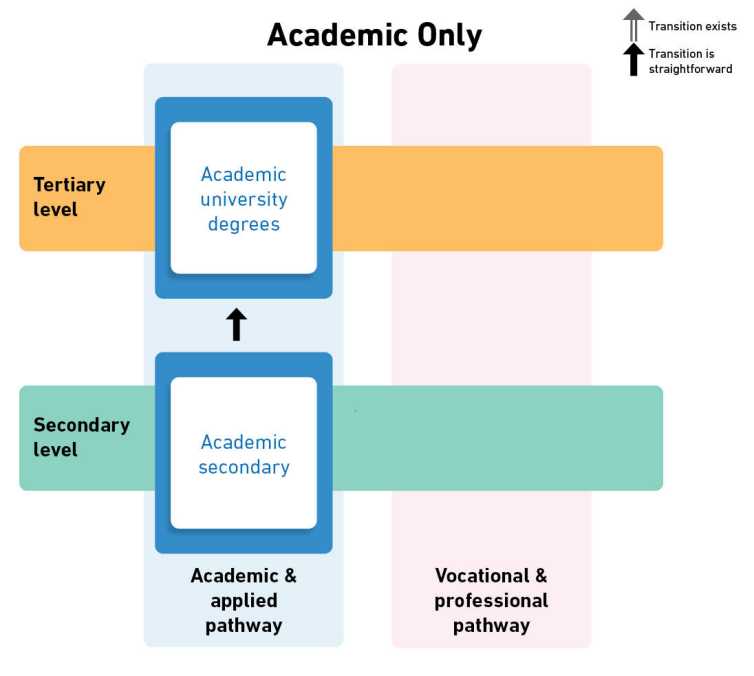
The Academic Only type is missing opportunity in the vocational and professional pathway. This would leave out people whose goals, preferences, and opportunities don't align with academic education. -
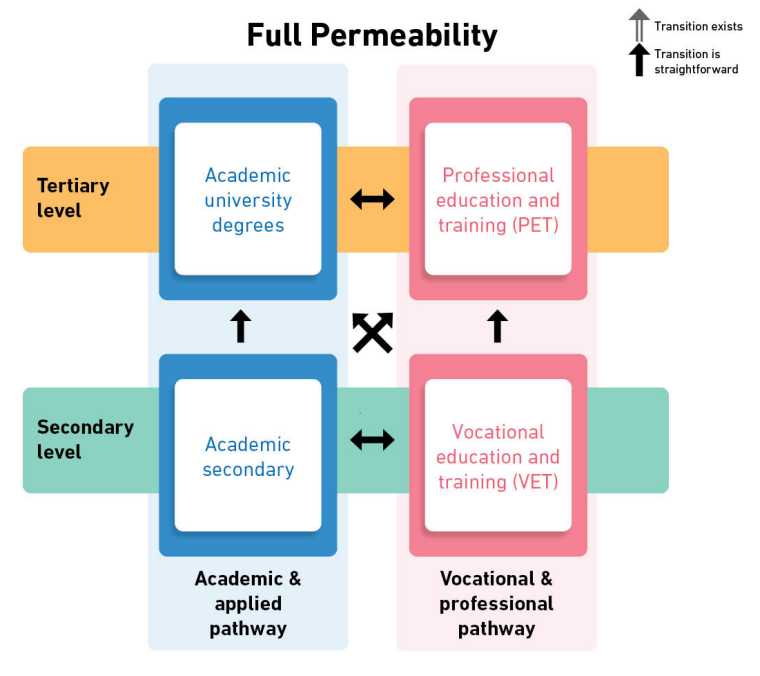
In a fully permeable system, people have the opportunity to choose between different education and training programs at each education level and they can go from any starting point to any endpoint in a straightforward manner.
But doesn’t this mean that people with a university degree are automatically better off than others? The answer is: no.
Research in the economics of education has shown that years of education, not just university education specifically, improve key outcomes like employment and income. In Switzerland, for example, young people who start in VET or academic education end up with similar lifetime earnings and similar risks of unemployment.
It’s important to note that we can only make such comparisons in a permeable system that lets you choose between different education types at the same level. In a nutshell, it’s about years of education and the field you’re educated in – not whether you have a university degree or not.
“It’s about years of education and the field you’re educated in – not whether you have a university degree or not.”CEMETS permeability blog 2/3
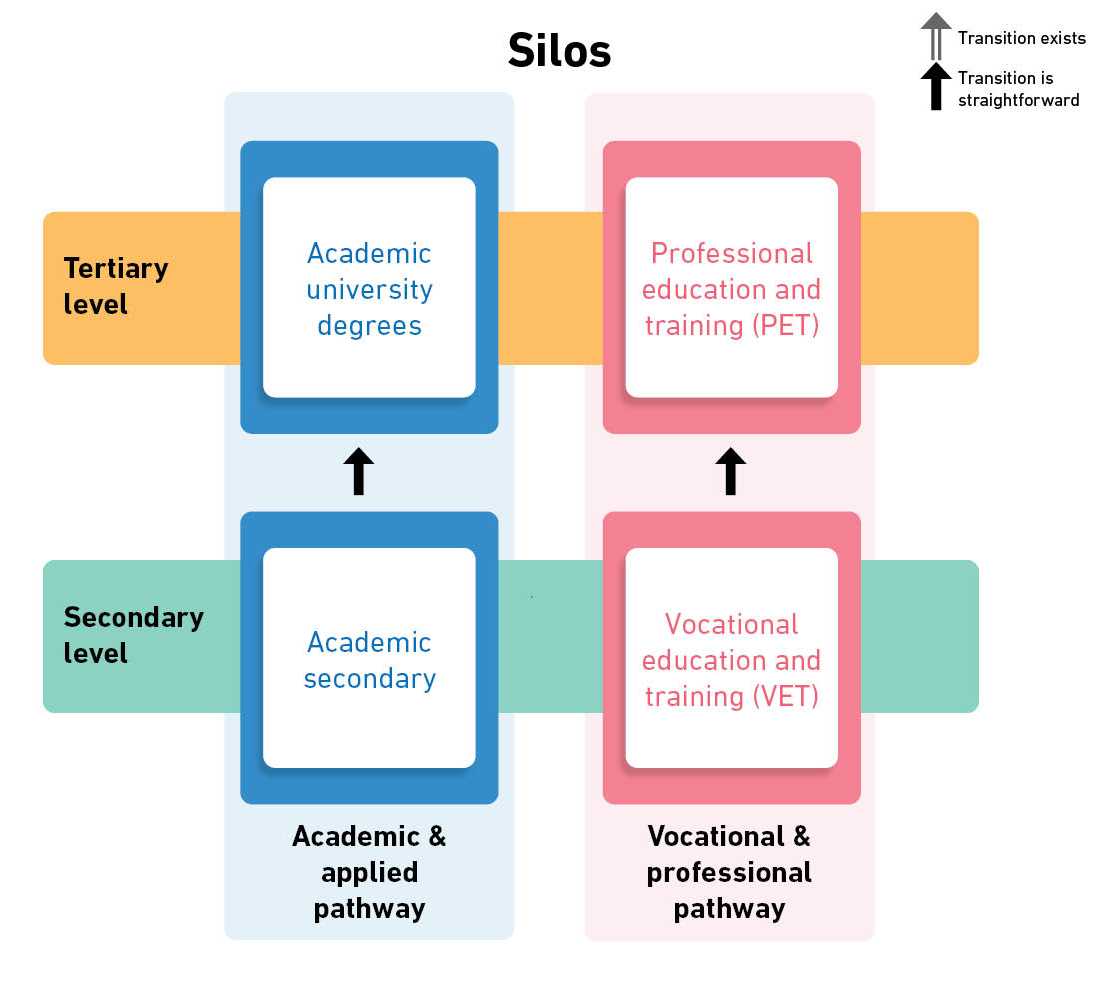
What does matter is that young people are not stuck in either the academic or the vocational and professional pathway, like in the Silos model. Permeability allows them to change their minds, respond to changing opportunities, or shift paths later in life.
In a fully permeable system, learners don’t just have the opportunity to choose between different education and training programs. They also have access to these programs no matter where they started.
Permeability is necessary for VET to be successful and attractive
Now imagine that your children have a VET option at the secondary level, as in the figures below, but no good way to move onto higher education and training programs. Would they choose VET in these scenarios? Most likely not. VET programs will be unpopular if they don’t offer good transition routes to the next step.
-
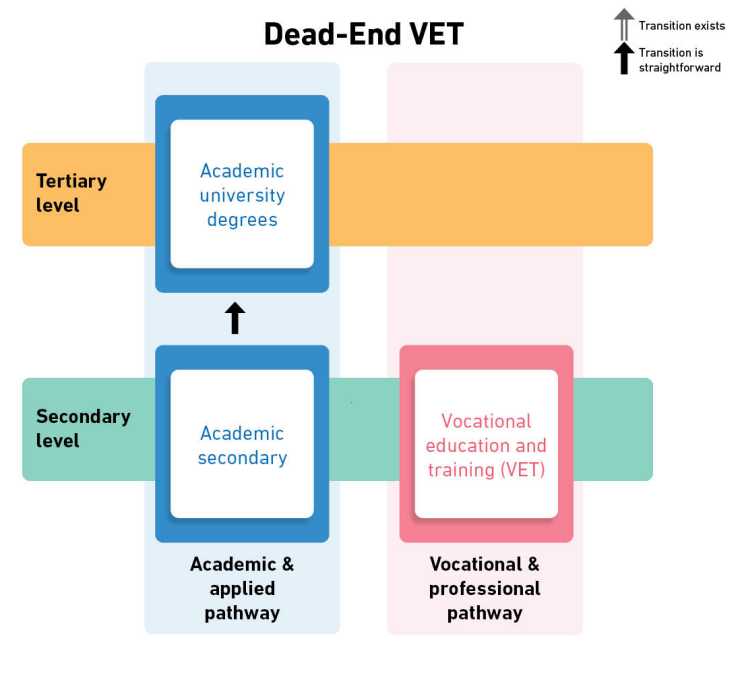
The Dead-End type has VET, but it doesn’t lead anywhere. There is no option to pursue higher education after VET: it’s a dead end. -
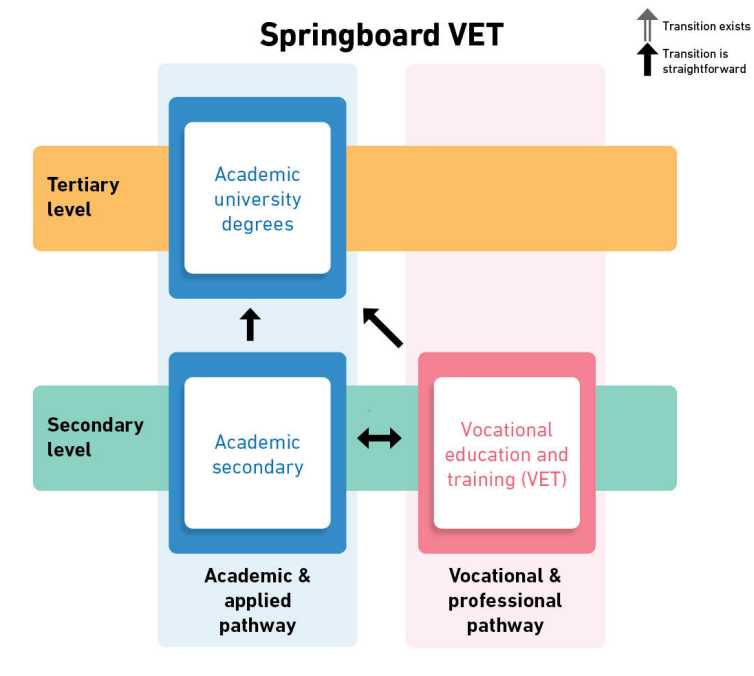
The Springboard type is an example of a system where VET programs essentially serve as a longer route to the same goal - university. This can make VET seem like the second-class option.
Here’s the key: no matter how excellent a VET program is, it will be less attractive if there are no (good) ways to move forward. Social stigma against VET programs often comes down to a lack of permeability. VET becomes more popular and attractive if it offers good transition routes to higher education and training programs.
In a permeable system, young people who choose VET have a direct route to the highest qualifications. They can still access the academic pathway (if they want), but it’s not the only way to get further education and training. In other words, permeability makes VET attractive and successful.
“No matter how excellent a VET program is, it will be less attractive if there are no (good) ways to move forward.”CEMETS permeability blog 2/3
Permeability is necessary to meet the skills needs of the economy
We now know that your children can benefit from a permeable system that includes VET and PET, and that permeability in turn makes these options more attractive. But the benefits extend beyond the reach of our kids. In fact, permeability is important for economic development in at least two ways:
1. Permeability can help reduce skills mismatch. The labor market demands a wide variety of skills at all levels, and classrooms aren’t always the best place to learn every skill. In a low-permeability system, this can lead to a mismatch between the skills graduates have and the ones they need to find jobs.
More permeable systems can offer a diverse range of skills on various levels. This not only helps individuals learn what they need to succeed, but also helps employers find the skilled workers they need to grow.
2. Permeability helps people combine work with lifelong learning. A permeable system lets people transition between education and work when they feel they will most benefit. This means they can spend more time making a productive contribution and still have the flexibility to learn new skills when needed.
Conclusion
Permeability is essential to include those people whose goals, preferences, and opportunities don’t align with academic education. It plays a crucial role in making VET programs more appealing and in providing the diverse range of skills demanded on the labor market. Stay tuned for our next blogpost, where we’ll dive into tools that can help improve permeability.